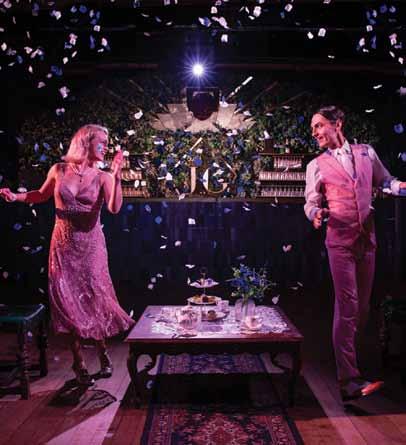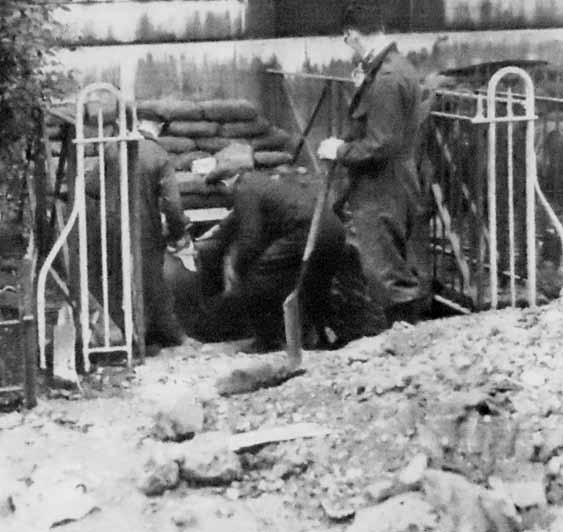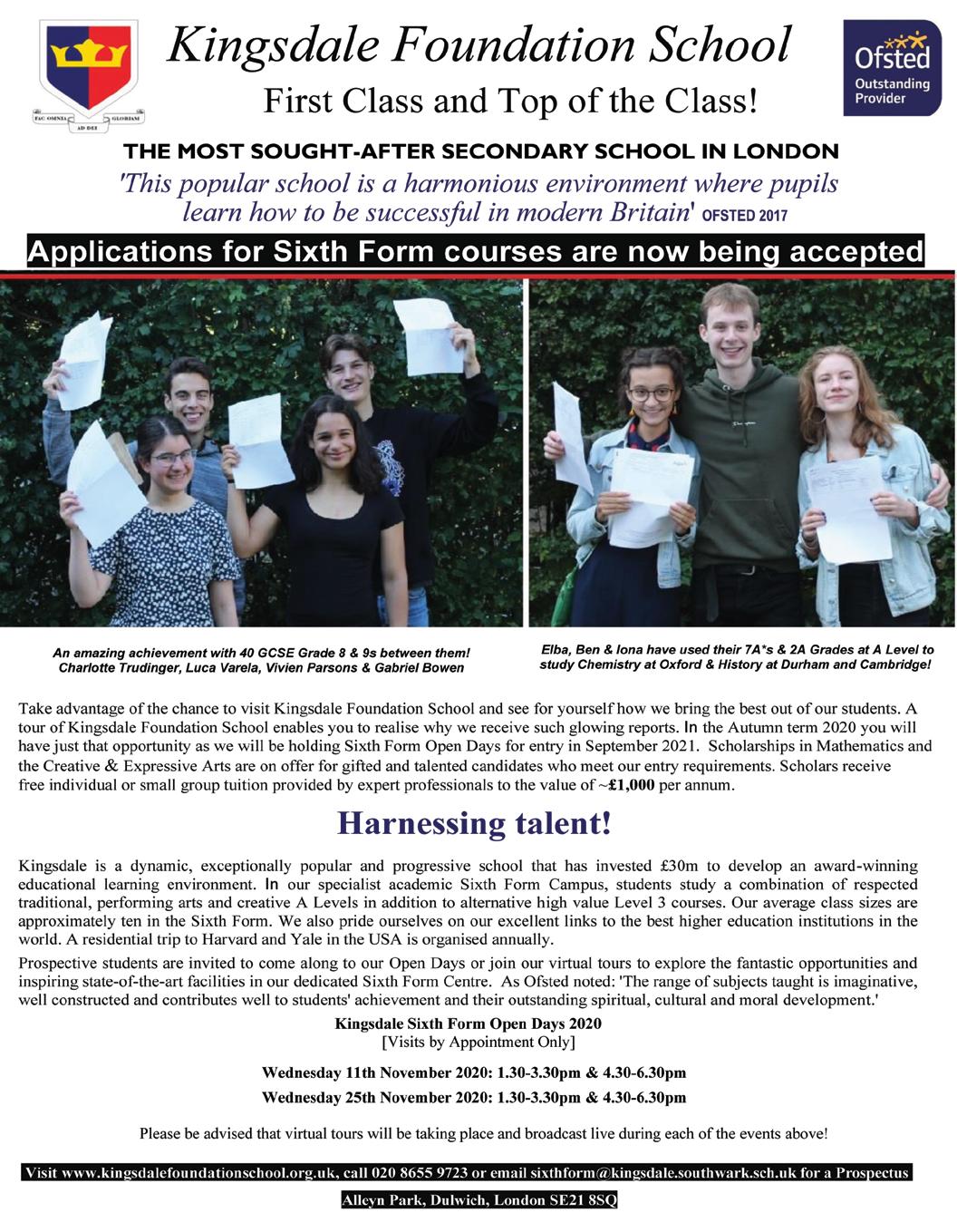
8 minute read
19 aRtS
what’s on in Southwark The next thing you know will be wonderful Photo by NatLPh
ShOwCaSINg theIr fourth production since lockdown, the eagle pub presents Next thing you know, a youthful musical (all the cast are 2020 graduates), with the book by ryan Cunningham, and music and lyrics by Joshua Salzman, writes Carolyn Hart Taylor...
Advertisement
Faced with the challenge of making life decisions, this cast of four twentysomethings sing an eclectic range of songs throughout this musical, covering sizeable issues such as career choice and committing to relationships, to more frivolous matters like drinking, smoking and dating.
Providing a perfect environment for characters to explore their angst is the imaginative decision to base the musical around a New York cocktail bar that doubles up as an apartment and workspace. Complete with neon pink flamingos, palm plants, an inky black dance floor and iconic American imagery, this foursome repeat conversations taking place all over the city.
Waverley (Bessy Ewa), in keeping with her name, spends her time wavering. Pinning hopes on romantic commitment from boyfriend Darren, (Nathan Shaw) audiences witness this fledgling’s lack of self-belief and resignation to remain in the nest, forever working in the cocktail bar as she sings, ‘All I want is for it to stay this way’. Quite the opposite is sassy friend, nightclub singer Lisa (Amelia Atherton), imploring Waverley to seize her moment, singing beautifully to her, ‘It’s your time, I’m waiting for mine’.
Comedy moments are sprinkled around: laddish Luke (Callum Henderson) climbs the stairs with his latest conquest declaring, ‘If I’d known you live on the 5th floor, I’d have taken someone else home’. Later he clues up recently separated Darren as he sings sardonically of, ‘The best way to get a girl - is to get a girl’; and, ‘you’ve got to applaud this sick trick played by God’. Henderson really shines while singing a wonderful number about the grip cigarettes have.
Simple as this musical’s storyline is, it’s packed with superb lyrical numbers and sung with a quality and confidence you’d expect from more experienced performers. The cast shone, their varied personalities lending the play depth and interest.
A wonderful, entertaining night out.
Next Thing You Know is on at The Garden Theatre at The Eagle, 349 Kennington Lane, London SE11 5QY until Saturday 31 October. Time: 6pm. Admission: £20.00 + bkng fee www.gardentheatre.co.uk

Gatsby’s Masquerade Ball
SeeINg aS 2020 has not gone as planned it seems only right to don a sparkly dress, grab a glass of champagne and return to the 1920s for some Jazz age revelry. writes Rosie O’Connell...
The grim realities of the world outside are, of course, never too far away with face masks and hand sanitisers aplenty, though the masks hardly seem out of place at Gatsby’s Mansion, merely add to the masquerade.
Starting off (socially distanced) in the grand art deco designed bar and central space we are immediately introduced to our narrator Nick Carraway in the midst of one of Gatsby’s notorious parties. He is presently joined by the rest of the cast for an energetic Charleston that makes the room shake and the audience becomes naturally familiarised with the characters in attendance.
From this point on, pockets of guests are invited by the actors to join them in smaller side rooms where each group gets their own story additions. While previous renditions of this immersive experience would allow the audience to roam the different sets and rooms and stumble upon various interactions with the actors, the Covid-Safe restrictions mean just that - it is more restricted.
It is, nonetheless, hard to not feel as though you are missing out by not exploring those areas that are off limits, even though it seems to be planned out in such a way that no matter your seat for the evening you will be whisked away at some point. And the majority of the narrative unfolds in that central bar space. That said, for someone perhaps not as familiar with the plot, I do wonder how unclear all of this might be.
Craig Hamilton rose to the challenge as the eponymous Gatsby and gave a suave and smiling, yet melancholic detached performance, and Lucinda Turner’s Daisy was the perfect balance of self-absorbed but still somehow enchanting. Beyond the leading roles, Ivy Corbin as Jordan Baker has unmatched energy throughout the whole evening and Lucas Jones’ George Wilson is tragic and heartfelt.
The evening drew to an end with the feeling that actors and audience alike were truly thrilled and grateful to be in a performance space again. While it is not the open, free-roaming experience of before, they have maintained the glitz and glamour of Fitzgerald’s 1920s in a way that makes it well worth a step outside of reality for a few hours.
The Great Gatsby is on at a secret Mayfair location until January 31st. Times: Daily at 7.30pm. Saturday matinees 2pm. Admission: £29.95 - £49.95 www.immersivegatsby.com
History
80 years ago: The day sixTy-seven died aT a walworTh church
tODay (thurSDay 29th October 2020) the church will honour the memory of those who lost their lives that night 80 years ago, and those wardens and other civilians who treated the dying and injured with a special sociallydistanced service at 7pm. Prayers, psalms and Bible readings will be given up for the deceased. listen to the recorded extracts from rev. markham’s private papers read by Steven Davies, Jack mcInroy, Neil Crossfield, father alan wild, and Nigel Scott-Dickeson, on the Southwark News website www.southwarknews.co.uk/ news/39873-2/

eIghty yearS ago there lived a rector at St Peter’s church in walworth whose bravery and leadership matched his ability with a pen.
During the Blitz the church became an extraordinary focal point for the area. Its cavernous crypt was the most sought-after sanctuary over any Anderson shelter during the daily raids, and no doubt its presence preserved many families’ lives.
But as its rector from 1937 to 1944, the Reverend John Gabriel Markam recalled in his scarcely circulated memoirs that St Peter’s saw its fair share of disasters. Markham’s memoirs first paint a picture of Walworth as a working class district of 11,000, where rows of terraced houses sprung up along what was Walworth Common in the 1820’s.
It was Markham who volunteered the church crypt to the authorities as a public shelter, just as it had been in World War One. It was first designated to shelter for 230 before the first airraid sirens rang on September 2, 1939. The crypt ran the length of the church and its insides were supported with four aisles of brick arches supporting the six-inch thick ceiling of fifteen foot blocks of York stone. And there was no water or electricity inside.
“We had all been indoctrinated into this idea that it would all start with a massive bombing of London,” Markam wrote with a touch of humility. But the following months, he said, came to be known as the “phoney war” and the people’s urgency “slipped away” as the sirens fell on deaf ears.
In July 1940, Markham wrote, “the Battle of Britain began”. He neglects to give an exact date, but he says the air raids started “on a brilliant sunny day with the distant rumbling of antiaircraft guns. The sirens wailed… the crypt from then on held anything between 600 and 900”.
What he most loathed about the nightly raids was the “continual drone” of aircraft and “the crash of bombs preceded by their eerie descending whistle and whoosh” which would last from 6pm until 6am. He vividly remembers treading delicately over bodies sleeping in the crypt “like sardines” lying on carpets, blankets and mattresses, while some slept in deck chairs or lay on narrow wooden benches.
But on October 28, the church took a direct hit, and Markham relives the chaos that ensued. From outside in the church yard he saw two bombs crash through the ceiling and “orange flashes” erupt from the windows.
“Then I heard a confused murmur from the crypt, and a dusty figure struggled among the sandbags in the doorway at the steps leading to the shelter,” he said.
Markham gave an estimate of 200 casualties to the telephonist, and began leading the rescue effort with doctors and wardens to get the buried civilians out, and into a make-shift triage at the neighboring school.
Next morning there were new estimates of 250 seriously hurt and 70 killed, later confirmed to be 67 dead – including an 83-year-old and a baby of 11 months.
Both “semi-armour piercing bombs” had exploded on the floor of the crypt, having gone through the church ceiling. One had pierced straight through the church organ, sending shards of pipes everywhere, and detonated next to where a family of six had slept, “blowing them to pieces”.
The blast had “literally lifted the whole church, causing the brickwork to part” and it wasn’t for several weeks until the church could be put to use. Despite the tragedy, Reverend Markham says St Peter’s remained the centre of his faithful congregation throughout the war.

“We were much more fortunate than the majority of the churches in the neighbourhood, which were either completely blown to pieces or burnt,” he concluded.




